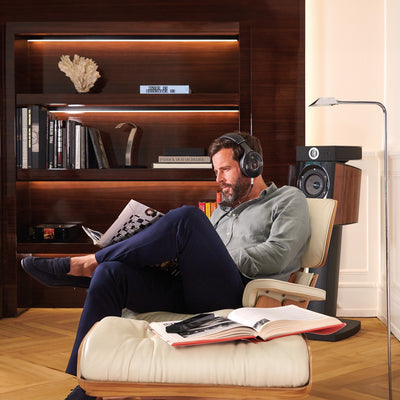
Understanding Music in Depth: A Guide to Hi-Fi and High-End Audio Systems
Share


The Pure State of Sound: The Audiophile's Journey
Music is a universal language that leaves a cultural and emotional impact. With developing technology, the ways we listen to music have also changed greatly. But the truth at the heart of each of us is this: We want to hear music in the purest and highest quality possible. So, how does this happen?
ABC of High Fidelity: What is Hi-Fi and High-End?
Hi-Fi means high fidelity. This term refers to the devices used to deliver the original sound recordings to the listener in an almost indistinguishable way. High-End audio systems represent an even further level of this high fidelity. Both concepts are indispensable for audiophiles and home audio enthusiasts.
Technical Parameters in Hi-Fi and High End: What to Measure?
There are two basic measurements for Hi-Fi and High End Headphones : impedance and sensitivity. The higher the impedance, the more power the headphone needs to be driven. Sensitivity measures how high a sound intensity the headset can reach with unit power.
How Should Source and Amplifier Selection Be in Hi-Fi and High End Audio Systems?
Devices that will be the center of your system; should be headphones or speakers and then amplifier or DAC. An external DAC/Ampl combination is often best, as integrated sound cards in mobile devices and computers are often inadequate.
Equipment Selection According to Music Genres
Each genre of music comes with a different experience and different equipment requirements. Deep bass may not be necessary for classical music, but it may be the opposite for electronic music.
The Metaphorical Journey of Audiophiles
Remember the first excitement of listening to music. At that time, a mobile phone headset was enough. However, as you delve deeper into this hobby, different sound profiles and specifications begin to make sense. As we progress, not only the music but also the quality of the equipment we listen to it on becomes our source of excitement.
What are the Headphone Types and Driver Types?
Headphones are mainly divided into two: in-ear and over-ear. Each of these categories is divided into subcategories such as wireless, completely wireless and wired. Different drive types are also available; such as dynamic, balanced armature, planar and electrostatic drives.
Closed-back headphones provide an isolated listening experience. Open-backed headphones create a wider sound stage. Let's examine the driver types in more detail.
Driver Types of Hi-Fi and High End Headphones
- Dynamic Drivers: Dynamic drivers are the driver type that most of us encounter most frequently. The magnetic coil is formed by the combination of the magnet and the diaphragm. Thanks to its simple structure and affordable price, it is generally used in entry-level and mid-level headphones.
- Balanced Armature Drivers: These types of drivers are mostly used in in-ear headphones. It has a more compact structure and can generally transmit high frequency details better. However, bass response is generally weaker than dynamic drivers.
- Planar Magnetic Drivers: These drivers produce sound by moving a thin diaphragm located between magnetic fields. It is generally used in high-priced and high-performance headphones. It is known for a smoother frequency response and low distortion characteristics.
- Electrostatic Drivers: Electrostatic drivers use a thin diaphragm and two metal plates to which an electrical charge is applied. This system provides high detail and accuracy, but is usually very expensive and requires a special amplifier.
What are the High End and Hifi Headphone Types?
Closed-Back Headphones : It can be defined as an isolated system in which the driver is completely disconnected from the outside world.
Open-Back Headphones : Designed to be acoustically transparent, they offer a wider soundstage.
It is important to remember that each type of driver has its own advantages and disadvantages. Choosing the one that suits your needs and preferences will help you get the best audio experience.

